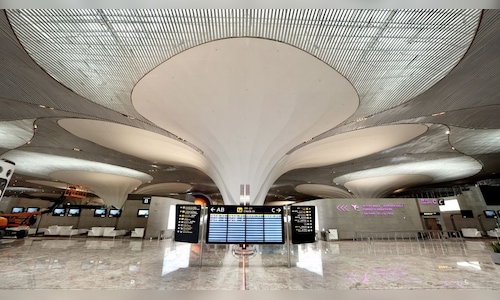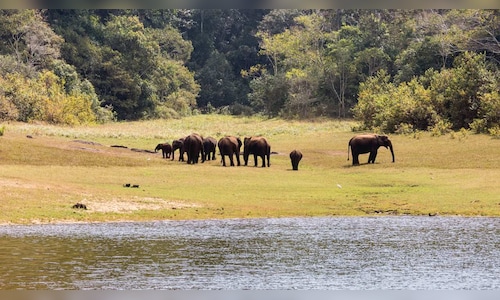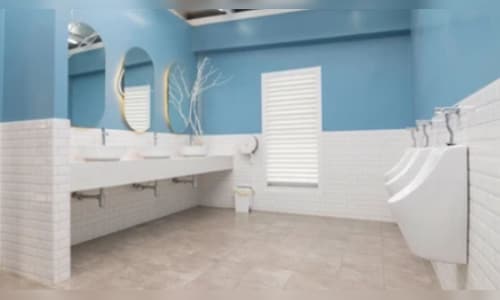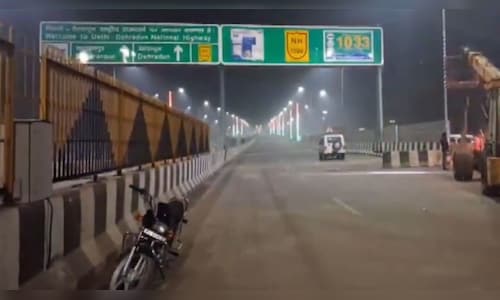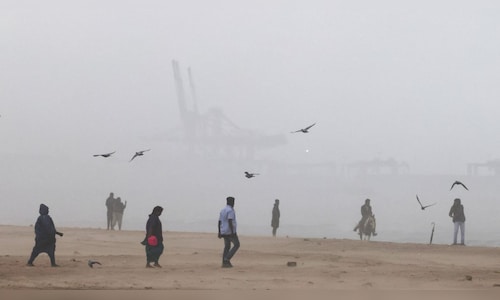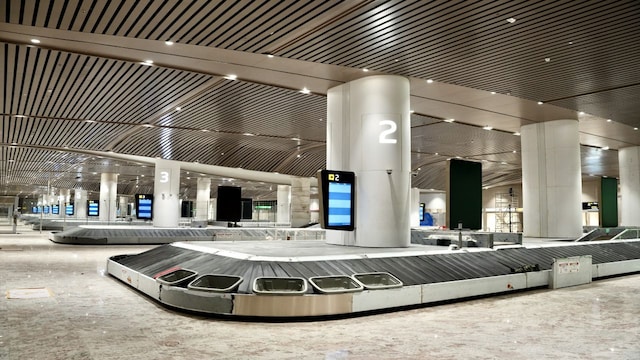
 1 / 11
1 / 111. India’s First Fully Digital Airport | NMIA is set to be India’s first fully digital airport, offering online baggage drop, pre-booked vehicle parking slots, and AI-enabled terminal operations. Passengers will experience faster, seamless travel through fully automated systems. (Image: PTI)
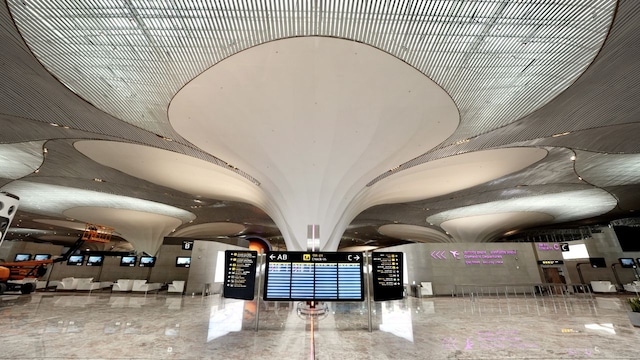
 2 / 11
2 / 112. Iconic Design Inspired by a Lotus | Designed by London-based Zaha Hadid Architects, the airport terminal resembles a floating lotus, inspired by India’s national flower. The modern design includes digital art installations and large LED screens to enhance the passenger experience. (Image: PTI)
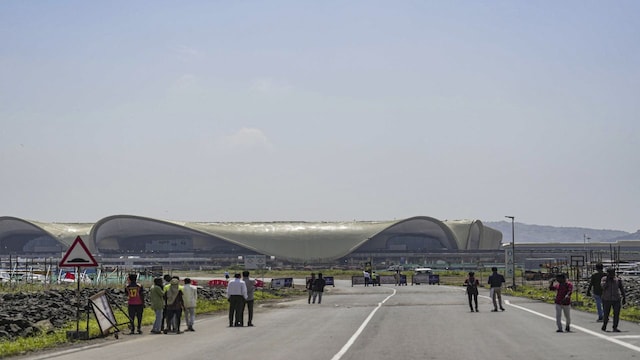
 3 / 11
3 / 113. Massive Capacity and Future Expansion | The 1,160-hectare airport will initially handle 20 million passengers annually via one runway and terminal. At full capacity, NMIA will have four terminals and two runways, serving up to 155 million passengers per year. (Image: PTI)
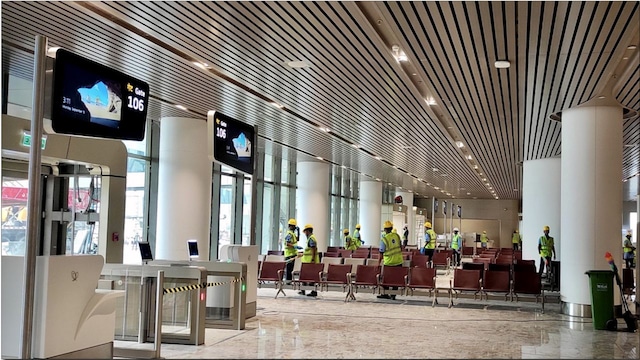
 4 / 11
4 / 114. Job Creation and Economic Impact | Built for ₹19,650 crore under a public-private partnership between Adani Airport Holdings and CIDCO, NMIA is projected to generate over two lakh jobs across aviation, logistics, IT, hospitality, and real estate sectors. (Image: PTI)
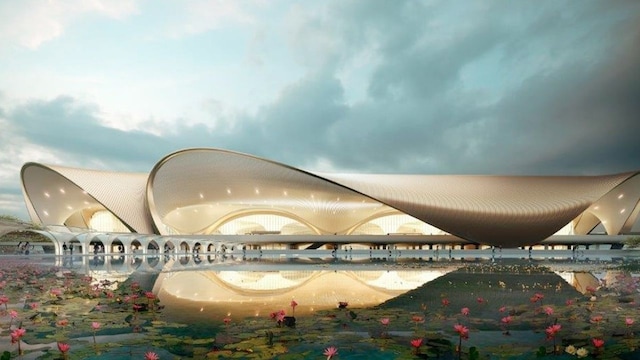
 5 / 11
5 / 115. Advanced Landing System for All Weather | The airport features a special advanced landing system to ensure safe landings during fog, rain, or low-visibility conditions, surpassing the capabilities of Mumbai’s current airport. (Image: Zaha Hadid Architects)
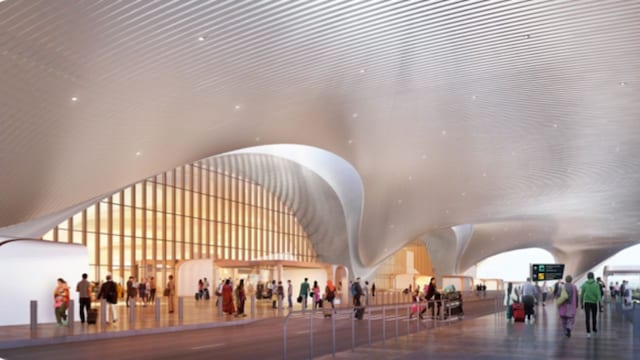
 6 / 11
6 / 116. Strong Airline Presence | Several airlines, including IndiGo, Air India Express, and Akasa Air, have announced plans to operate flights connecting major Indian cities. Initially, the airport will run 12-hour operations with about 40% international traffic, gradually increasing to 75%. (Image: NMIA)
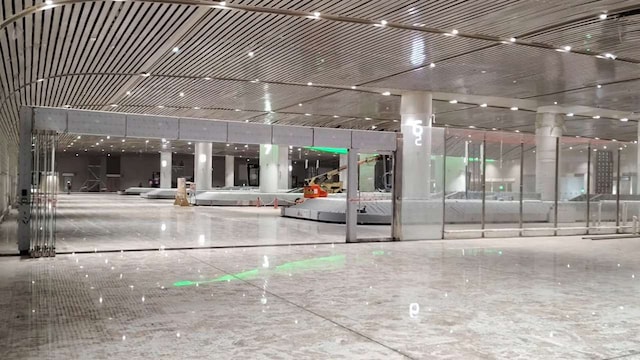
 7 / 11
7 / 117. Multi-Modal Transport Connectivity | NMIA will be India’s first major aviation hub connected to expressways, metro and suburban rail networks, and waterway services, making it highly accessible for travellers across the region.
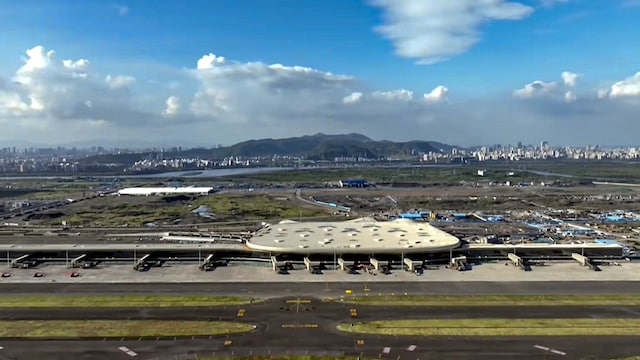
 8 / 11
8 / 118. Passenger-Friendly Facilities | The airport has four gates and three main areas—Alpha, Bravo, and Charlie—with 88 check-in counters, including staffed and self-check-in options. Food halls allow passengers to order from multiple outlets and receive deliveries at their gate, ensuring convenience. (Image: PTI)
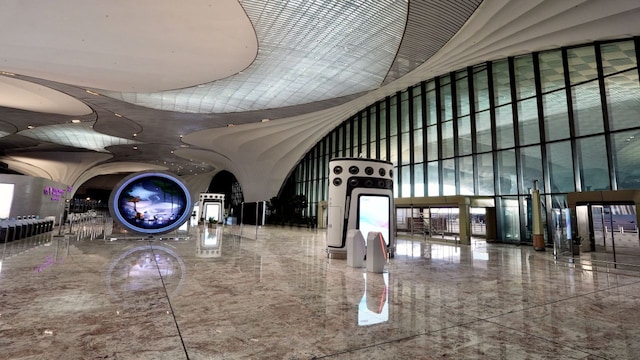
 9 / 11
9 / 119. Focus on Young, Tech-Savvy Travellers | With 64% of visitors expected to be young and tech-savvy, digital boarding gates and AI-powered facilities will streamline travel, reducing waiting times and improving passenger experience. (Image: PTI)
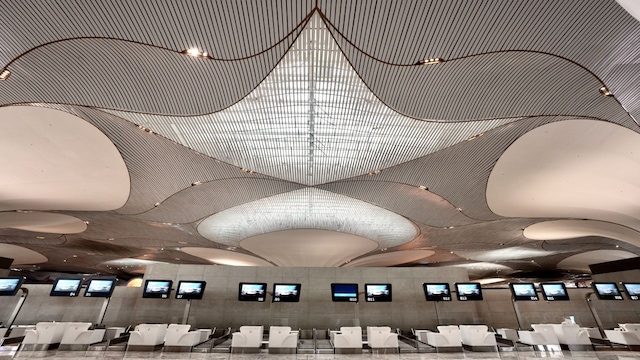
 10 / 11
10 / 1110. Cargo and Maintenance Hub Plans | NMIA aims to become a leading hub for cargo and aircraft maintenance in India, modelled after global airports like Shanghai, further boosting its strategic importance in the aviation sector. (Image: PTI)
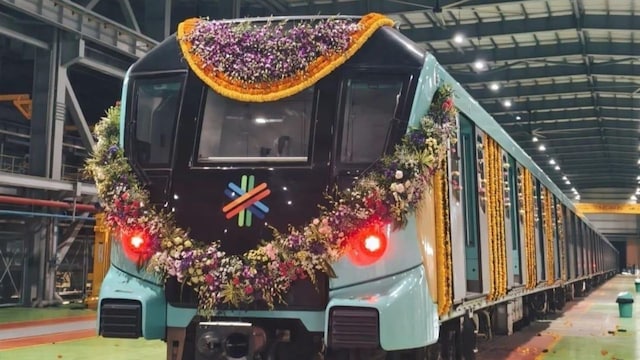
 11 / 11
11 / 11Mumbai Metro Line-3 | Modi also inaugurated Phase 2B of the Mumbai Metro Line-3, stretching from Acharya Atre Chowk to Cuffe Parade, constructed for ₹12,200 crore. He dedicated the entire ₹37,270 crore Mumbai Metro Line 3 (Aqua Line) to the nation, marking a major milestone in the city’s urban transport transformation. (Image: Devendra Fadnavis/X)


